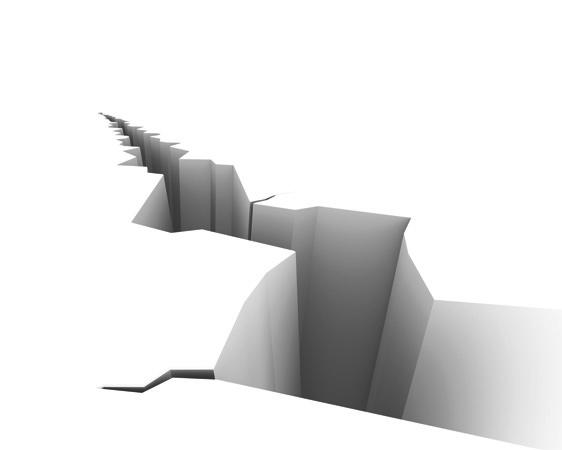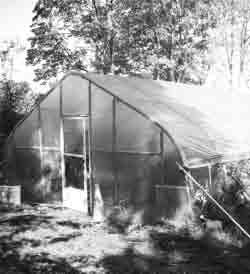
5 minute read
Green
from Oct. 25, 2012
All shook up
Last week, schools and businesses in the area participated in the Great Nevada ShakeOut, an effort to increase earthquake preparedness. The event, held on Oct. 18 at 10:18 a.m., led participants through a drill about what to do in the event of an earthquake: “Drop to the ground (before the earthquake drops you!); take cover by getting under a sturdy desk or table, and hold on to your shelter and be prepared to move with it until the shaking stops,” according to the Recommended Earthquake Safety Actions guide, available on the ShakeOut website, along with other information pamphlets, such as preparedness for people with disabilities.
Advertisement
More than 510,000 people participated in the drill, most of whom were students in the Washoe County School District and local colleges. Every county in Nevada registered, and Washoe County had around 100,000 participants.
The Great Nevada ShakeOut is part of the global ShakeOut program, and other states and countries—including New Zealand, southern Italy and Japan—take part. While the main ShakeOut drill was Oct. 18, people were encouraged to participate throughout the month of October. To read the information pamphlets or register an organization for a drill, visit http://www.shakeout.org/nevada/.

Pipe blockage
Progress on the Keystone XL pipeline was put on hold for a few days due to potential safety risks, reported by the Associated Press last week. According to the report, “The possible safety issues were found on part of the pipeline that extends between Missouri and Illinois.” Engineers were sent to investigate the problem, which was referred to as a “small anomaly,” to ensure that the crude oil would not leak, despite the claims that the pipeline is the “safest ever built,” according to TransCanada, the company leading the project.
The pipeline has been highly controversial, particularly since it will run through the Ogallala aquifer, which provides water to several states in the west and Midwest regions of the U.S.
Backpedaling
This year’s Edible Pedal drew in nearly 1,000 participants, exceeding last year’s numbers. The website is already set up to take registrations for the 2013 ride.
In our coverage of the event, “Bikes and bites” (Aug. 30), we did not include the efforts of local publication Edible Reno-Tahoe, who help organize the event.
“Edible Reno-Tahoe is the ‘edible’ in Edible Pedal,” Amanda Burden, editor and publisher of Edible Reno-Tahoe, said in an email correspondence.
We regret the omission. For more information about Edible Pedal, visit http://www.ediblepedal100.org/.
—Ashley Hennefer
ashleyh@newsreview.com
ECO-EVENT
Build a hoop house to protect fall and winter crops at a workshop hosted by the Western Nevada College Specialty Crop Institute. Local gardeners, including Ray Johnson from Custom Gardens Organic Farm, Rick Lattin from Lattin Farms, and Mark O’Farrell from Hungry Mother Organics will demonstrate hoop production and gardening practices. Participants will also be taken on tours to Lattin Farms and Custom Gardens Organic Farm. Nov. 3, WNC Fallon Campus, 160 Campus Way, Fallon. 9 a.m.-4 p.m. $35 for early bird registration, $45 after Oct. 26. Registration required, so visit http://bit.ly/X2os2b.
Got an eco-event? Contact ashleyh@newsreview.com. Visit www.facebook.com/RNRGreen for more.

PHO TO/A SHLEY HENNEFER
Nevada Energy Office director Stacey Crowley speaks at a Builders Association of Nevada news conference.
Get fit
EnergyFit Nevada
Homeowner Tish DeValliere likes saving time by not dusting her home constantly and clearing surfaces of the black dust that comes in through the attic. She also appreciates the quiet, now that her ducts have been properly sealed, consideringby Ashley Hennefer 70 percent of the ducts were not connected in her 50-year-old home. DeValliere and her family are members of the EnergyFit Nevada program, which helps assess and finance energy improvements to residential buildings. ashleyh@ “I wanted to better conserve energy,” DeValliere says. For around $200,newsreview.com homeowners in the EnergyFit Nevada program can get a home assessment, also often referred to as an energy audit (“Homepowered,” Aug. 9). An assessment will target specific improvements a homeowner can make to reduce wasted energy, improving heating/cooling and saving money on energy bills. Then, EnergyFit will help homeowners finance retrofits through rebates or low interest loans. Homeowners can receive $3,000 in rebates if homes meet a 15 percent energy savings. The program is organized by HomeFree Nevada, an organization that serves as the Nevada branch of Home Performance with Energy Star (HPwES), and is funded by the Nevada State Office of Energy (NSOE).
For more info, see “This is a check-up for your home,” says Stacey Crowley, director of energyfitnevada.org NSOE, relating the home assessment to receiving a diagnosis from a doctor. Crowley also says energy efficiency is “really an economic development driver” because it employs people trained in the construction industry who may be unemployed because of the housing market. But Crowley notes that it’s not just about money—energy efficiency also contributes to better home comfort by improving air quality and better maintaining temperatures within a home. Bob Conrad, energy outreach coordinator for NSOE, agrees. Conrad had his home assessed earlier this year by the EnergyFit Nevada assessors, who were able to target several areas in need of improvement. After changing the can lighting in his home, which had been letting air in through the garage, Conrad says the difference “was almost instantaneous.” “We’ve noticed an improvement with the air quality, and the house is much quieter.” Oct. 22, 23 and 24 were proclaimed as EnergyFit Nevada days by Reno, Sparks and Washoe County. According to Denee Evans, director of HomeFree Nevada, these days are intended to bring awareness to financially feasibly options homeowners have for retrofits. Energy experts encourage homeowners, who are considering adding renewable energy resource to the homes, to start first with an energy audit, in which an auditor will survey a home to find areas where energy is being wasted. “It’s like putting a Band-Aid on a shotgun wound,” Conrad says. “You’re not addressing the air being let out unless you look at that first.” During the fall and winter season, hot air generated by heaters escapes through poorly insulated windows, through vents leading to garages or attics, or other features, like skylights or screen doors. After existing problems have been dealt with, then a homeowner can invest in new appliances or energy generators like solar panels. EnergyFit Nevada recently announced a winter rebates program to help tackle winterization projects. The organization reported that around 150 residents have made home improvements since the program’s inception last fall. Ω











